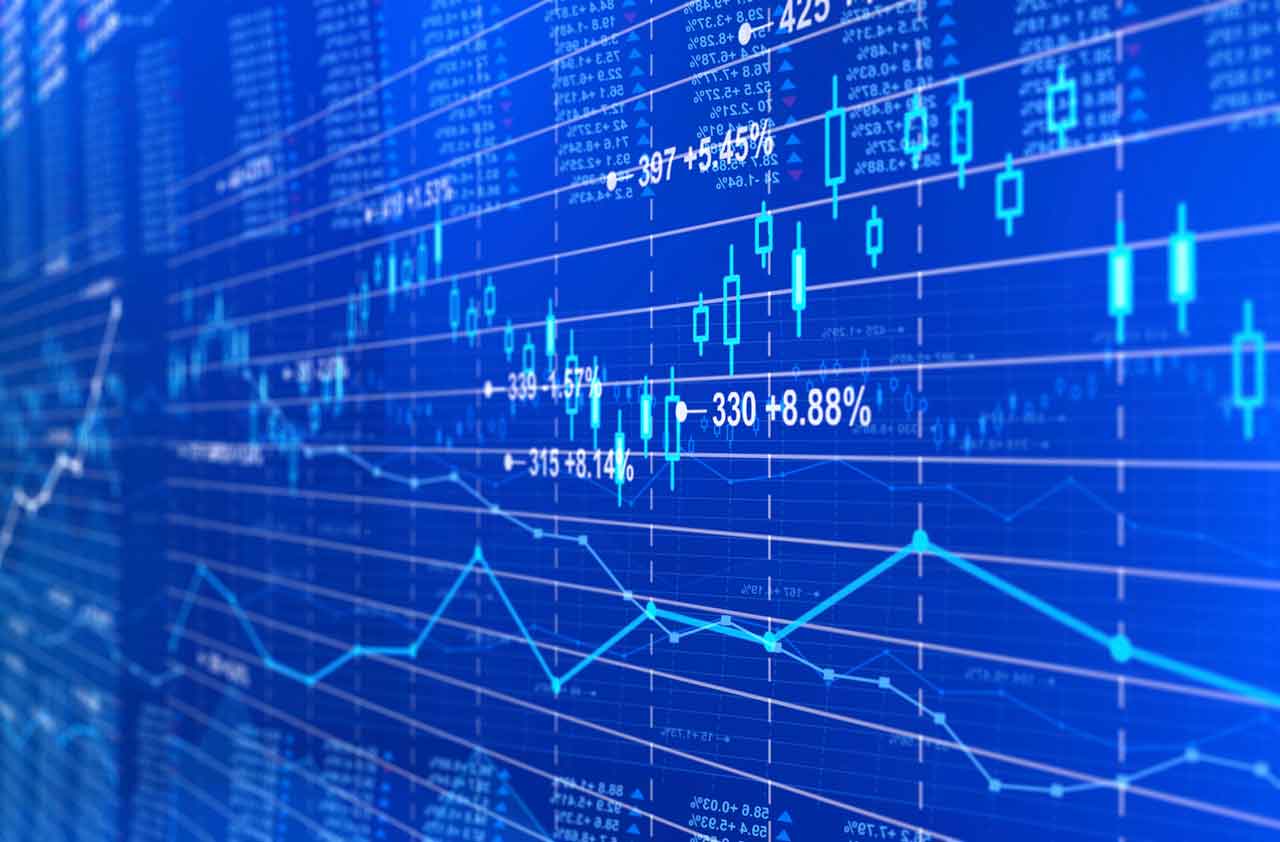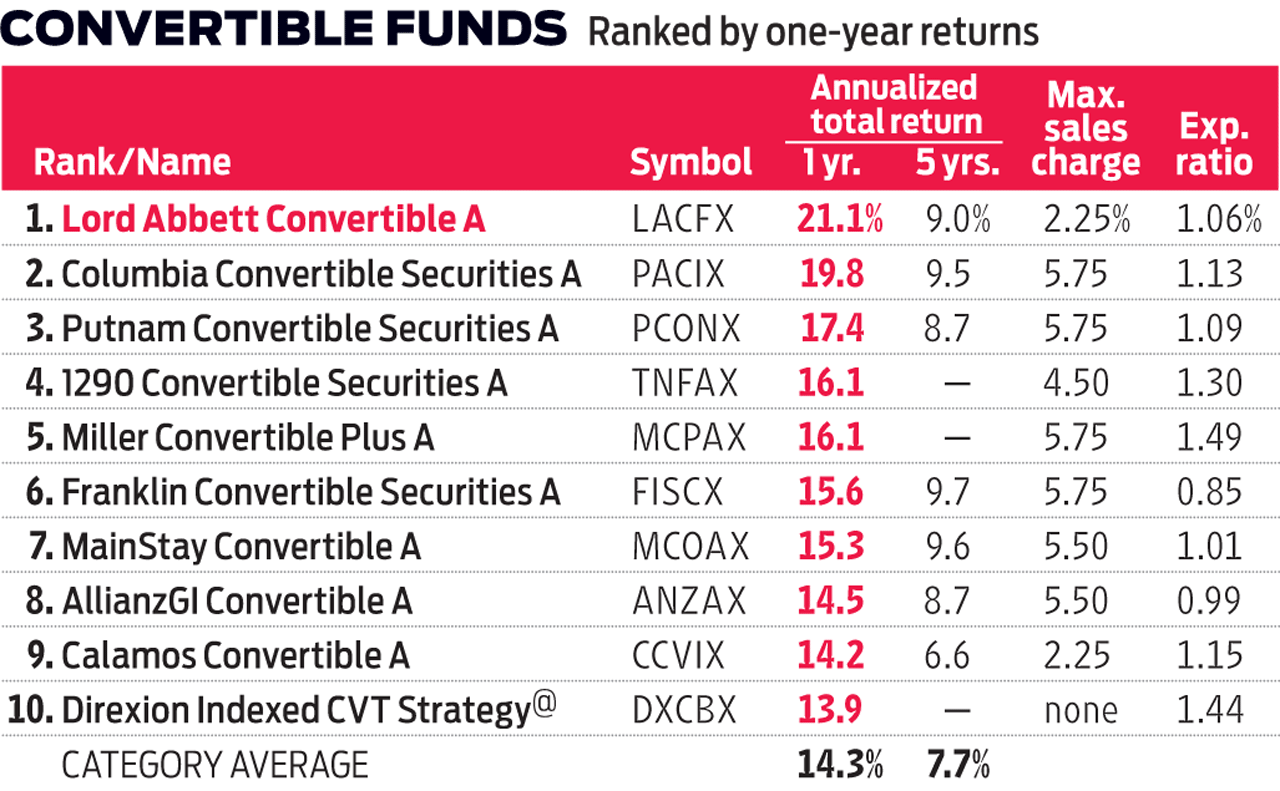A Convertible Fund for the Risk-Averse
Lord Abbett Convertible Fund has scored solid gains by focusing on the right securities for different kinds of markets.


If you’re feeling skittish about this never-say-die bull market but you’re worried about missing out on future stock gains, here’s an idea: Take convertibles for a spin. These hybrid securities combine elements of bonds (or preferred stocks) and common stocks.
To keep things simple, we’ll focus on convertible bonds. They pay interest at a fixed rate and mature at face value. But investors have the option to exchange their bonds for a predetermined number of shares of the issuer’s stock. Whether it makes sense to convert depends on the stock’s price. A key element of convertible-bond behavior is that the bonds tend to trade like stocks if shares of the issuer trade at a high-enough price for conversion to make sense. But if the stock’s price is well below the level at which the investor wins by converting, the convert will trade more like a regular bond, reacting heavily to swings in interest rates.
Convertible returns are “asymmetrical,” says Al Kurtz, comanager of Lord Abbett Convertible Fund (symbol LACFX), a top performer in the group. By that, he means the bonds tend to track share prices more closely in a rising market than they do when stocks are sinking. So he and his team add more-stocklike convertibles when they’re bullish on stocks and focus on converts that are more likely to trade like bonds when they’re cautious about the market.

Sign up for Kiplinger’s Free E-Newsletters
Profit and prosper with the best of expert advice on investing, taxes, retirement, personal finance and more - straight to your e-mail.
Profit and prosper with the best of expert advice - straight to your e-mail.
Balanced approach. The fund typically holds about two-thirds of its assets in stocklike converts. The managers boosted their allocation to such bonds last year, snapping up issues whose underlying stocks they believed were undervalued because of concerns about the election. They’ve since sold some of their most stock-sensitive converts in favor of safer bonds. The fund’s sector weightings also reflect a “more balanced approach,” says Kurtz. At last check, defensive health care and utility bonds accounted for the largest chunks of the portfolio, followed by converts issued by industrial companies and retailers, two more-volatile sectors.
The fund’s Class A shares, which yield 1.4%, levy a 2.25% sales charge, but they are available without a load at several online brokers.

Get Kiplinger Today newsletter — free
Profit and prosper with the best of Kiplinger's advice on investing, taxes, retirement, personal finance and much more. Delivered daily. Enter your email in the box and click Sign Me Up.

Ryan joined Kiplinger in the fall of 2013. He wrote and fact-checked stories that appeared in Kiplinger's Personal Finance magazine and on Kiplinger.com. He previously interned for the CBS Evening News investigative team and worked as a copy editor and features columnist at the GW Hatchet. He holds a BA in English and creative writing from George Washington University.
-
 6 Stunning Waterfront Homes for Sale Around the US
6 Stunning Waterfront Homes for Sale Around the USFrom private peninsulas to lakes, bayous and beyond, Kiplinger's "Listed" series brings you another selection of dream homes for sale on the waterfront.
By Charlotte Gorbold Published
-
 Six Reasons to Disinherit Someone and How to Do It
Six Reasons to Disinherit Someone and How to Do ItWhether you're navigating a second marriage, dealing with an estranged relative or leaving your assets to charity, there are reasons to disinherit someone. Here's how.
By Donna LeValley Published
-
 Dividends Are in a Rut
Dividends Are in a RutDividends may be going through a rough patch, but income investors should exercise patience.
By Jeffrey R. Kosnett Published
-
 Municipal Bonds Stand Firm
Municipal Bonds Stand FirmIf you have the cash to invest, municipal bonds are a worthy alternative to CDs or Treasuries – even as they stare down credit-market Armageddon.
By Jeffrey R. Kosnett Published
-
 High Yields From High-Rate Lenders
High Yields From High-Rate LendersInvestors seeking out high yields can find them in high-rate lenders, non-bank lenders and a few financial REITs.
By Jeffrey R. Kosnett Published
-
 Time to Consider Foreign Bonds
Time to Consider Foreign BondsIn 2023, foreign bonds deserve a place on the fringes of a total-return-oriented fixed-income portfolio.
By Jeffrey R. Kosnett Published
-
 The 5 Best Actively Managed Fidelity Funds to Buy Now
The 5 Best Actively Managed Fidelity Funds to Buy Nowmutual funds In a stock picker's market, it's sometimes best to leave the driving to the pros. These Fidelity funds provide investors solid active management at low costs.
By Kent Thune Last updated
-
 The 5 Safest Vanguard Funds to Own in a Volatile Market
The 5 Safest Vanguard Funds to Own in a Volatile Marketrecession The safest Vanguard funds can help prepare investors for continued market tumult, but without high fees.
By Kyle Woodley Last updated
-
 The 12 Best Bear Market ETFs to Buy Now
The 12 Best Bear Market ETFs to Buy NowETFs Investors who are fearful about the more uncertainty in the new year can find plenty of protection among these bear market ETFs.
By Kyle Woodley Published
-
 5 of the Best Preferred Stock ETFs for High and Stable Dividends
5 of the Best Preferred Stock ETFs for High and Stable DividendsETFs The best preferred stock ETFs allow you to reduce your risk by investing in baskets of preferred stocks.
By Kyle Woodley Last updated